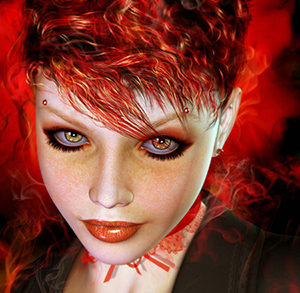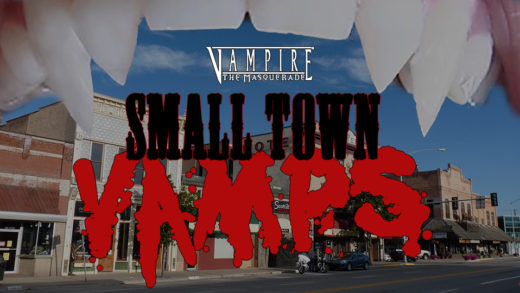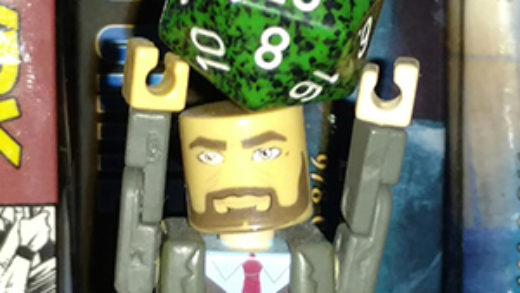Bordered by the Pacific Ocean to the west and the Rocky Mountains to the east, the Pacific Northwest stretches from Idaho into Oregon, Washington, and the Canadian province of British Columbia. The region is home to dense forests, rising peaks, deep lakes, and strange monsters. Here are 10 terrible things that your player characters might encounter within the Cascadia territory.
While all of these creatures are myths and legends of the Pacific Northwest and their tales can be found elsewhere, I have embellished or altered the stories for some of the cryptids and monsters for adventure seed purposes.
Sasquatch (Bigfoot)
The most well-known cryptid of the PNW is the Sasquatch. The hairy, bipedal creatures average around 8 feet tall and have oversized feet. It’s believed they’re related to the Yeti of the Himalayans. Unlike their snowy mountain counterparts, the bigfoots of Pacific Northwest are relatively peaceful and more inclined to hide from prying eyes than attack. However, they will defend themselves, first subtly then aggressively.
Numbering in the thousands throughout the entire Pacific Northwest. Tribes of these creatures are small; numbering no more than 25 per small commune. Sasquatch have a natural connection to the forest and many of its animals and insects. There are times where a tribe may not be as easy to escape human eyes: dying elders, sickness, newborns, or other maladys may prevent immediate migration. To help ward off humans, a Sasquatch will enlist common denizens of the forest to make life uncomfortable for homo sapiens. A human camp might have to deal with skunks, mosquitoes, or other nuisances that could drive them away. If the humans seem to be getting too close a Sasquatch will attack; usually at night and with heavy clubs. This is always a last resort and any killings would be purely by accident.
Batsquatch
A rarer creature that is related only to the Sasquatch in name, is the Batsquatch. Related to the Orang Bati of Indonesia and Ahool of Java, the Batsquatch reside in the forests near Mount St. Helens. Aggressive, even towards each other, numbers of the Batsquatch are extremely low. These bipedal monsters are 9 feet tall and have bat-like wings that span up to fifty feet. Their feet and hands resemble bird’s feet, hard and leathery with sharp talons. The rest of their body is covered in a bluish fur and their head resembles a yellow-eyed wolf, with sharp teeth.
The Batsquatch primarily prey on deer, elk, and coyotes. Hunting at night, they avoid bright lights. The few sightings of these creatures by humans have been due to them being startled by car headlights and attacking the vehicles. There are claims that the Batsquatch may affect car engines, but such instances may be conflated or confused with Mothman attacks of West Virginia. It seems unlikely the two creatures share the same powers or are related, but verification would require acquisition of both.
Gumberoo
Reported by lumberjacks in the 19th and 20th centuries, the Gumberoo almost looks like a large, fat bear. However, the creature is completely hairless except for large eyebrows and a bristly beard. The creature has a thick, leather-like skin; dark and smooth. The skin is extremely dense and thick; bullets are often reflected and cannot penetrate the monster’s hide. The only weakness of these bear-like creatures is fire: a dangerous weakness for attackers in the thick woods—especially during dry, summer seasons.
The Gumberoo are insatiably hungry. They will eat any and every living creature that they encounter; even eating an elk or bear will not curb their appetite. Fortunately, they only leave their lairs a few times a year to eat for 2-3 days then return to their dens in the bases of burnt-out cedar trees to hybernate.
Tree Octopus
Thought to be an Internet Hoax of the late 1990’s, the Tree Octopus has a much older history. The Sioux people that lived in what is now known as Oregon were attacked by tentacles while canoeing on the brackish waters of M’de Wakan, now known as Devil’s Lake. The lake is a deep, cold, and salt-infested body of water carved by glaciers in the last ice age. It’s often shrouded in mist, and the dark water hides all sorts of life.
Evolving to capture more prey, the eight-limbed mollusk can remain outside water for a much longer period than its ocean cousins. It can also live in fresher water than its ancestor. This evolution has allowed the creature to spread throughout the forests on the coastline; from Lincolnd County, Oregon to the Olympic National Forest in Washington. These carnivorous octopi hide in trees near rivers and lakes, waiting for prey to drink. The octopus then drops on its victims, choking them and dragging them into the water to feast.
Ogopogo
The largest of five inter-connected freshwater lakes of the Okanagan Valley of British Columbia, Okanagan Lake is home to a large serpent-like dragon named the Ogopogo. The natives of the area labeled the creature a sacred water demon. The dragon would demand a live sacrifice in exchange for safe crossing of the lake. The practice of sacrificing small animals before entering the water was done for hundreds of years by First Nations.
The small animals may have made for meager meals for the large serpent, but it was not food the dragon was interested in. It was recognition. When white settlers began to live in the region, Ogopogo struck similar bargains. In exchange for safety, they would make sacrifices to the creature. For the settlers, this sacrifice would be gold, silver, and jewelry.
Today, the Ogopogo plays a role in commercial symbolism and media representation. It has small statues and, like the Loch Ness Monster of Scotland, plays a role in generating tourism. While most believe the creature is either a myth or unthinking monster, a handful of community leaders know the secret. The Ogopogo is the indirect owner of much of the lake properties and lands, offering prosperity and safety to those who continue to pay it tribute.
Lake Chelan Dragon
The Ogopogo is not the only dragon that resides in the waters of the Pacific Northwest. A dragon’s egg was brought from Scotland in 1812 by Captain Chelan. When it hatched, it fled to the 55 mile long lake in north-central Washington state, where it grew strong and healthy by eating the fish and wildlife. There are rumors that mermaids aided the dragon’s hatching and escape, but there are few further tales of mermaids in Lake Chelan to support that story.
The dragon is a 30 foot long beast with the body of an alligator, a serpent-like head, and ribbed wings between its legs. Unlike the dragon of Okanagan Lake, Lake Chelan’s dragon does not parlay with humans and, as such, has no epitaph beyond its home lake. There are enough fish in the lake to keep the dragon well-fed and it rarely leaves the comforts of the depths. However, once in a while, it seeks new tastes and ventures onto land or extends its wings to soar.
The dragon appears to be immortal and impervious to any harm. There have been tales of the creature being attacked with knives, rocks, guns, and even dragged into the fire, only for the beast to grow even more angry.
Amhuluk
A strange creature lives in the waters of the northwest Oregon. The four-legged demon known as Amhuluk has a shaggy, green pelt and long, spotted horns on its head. The monster spreads pestilence and fog; where ever it steps, the ground softens and sinks. Thankfully for humanity, the fearsome beast rarely leaves its home in one of the lakes near Forked Mountain. Amhuluk is content to to remain in its “new” home, indulging in its favorite hobby of enchanting the water to drown whatever comes near.
Those who see the reflective waters of Amhuluk’s home become disoriented and get the sensation that the lake itself has drowned the sky and surrounding trees. And that they, themselves must be drowning. Victims fall into the water and drown, never quite sure in which direction the surface lies. Those that do manage to escape often find themselves falling violently ill and spreading contagious diseases, as being too near to the demon’s home means breathing in its musk.
Some venture into the lakes in the hope of making a deal with the demon, for it has the power to reverse disease as well. The demon will take diseases, curing the carrier and adding to its own repertoire. There is a risk that the demon will have seen the disease too often and will no longer be interested; those individuals will be gored on its horns; with a keepsake of its victims woven into the demon’s fur.
Ghosts of Wizard Island
Wizard Island is volcanic cinder cone in the center of Crater Lake. It is a nexus between life and afterlife, formed by a battle between two powerful spirits. The death of the evil spirit Llao left a stain upon the mountain and since its formation over 6,000 years ago has caused many deaths. Those who die on Crater Lake remain as ghosts.
Due to the nature of the island, camping is prohibited. Rangers will often report campfires burning on Wizard Island, but upon inspection no sign of campers or scorch marks on the ground will be found. Those who lodge near the lake will get an uneasy, unnerved feeling—especially if they have any psychic abilities (latent or manifested).
Many have died while hiking the steep slopes around the Crater Lake area and the land has seen a statistically unusual amount of plane crashes, car wrecks, recreational accidents, suicides, and murders. All those who die around Crater Lake will find themselves as ghosts; forever trapped between worlds on Wizard Island.
Baxbakwalanuxsiwae
The monster known as Baxbakwalanuxsiwae lives in a remote cabin in the far northwest corner of Washington. His house is covered in red cedar bark and blood-red smoke pours from the chimney. Baxbakwalanuxsiwae and his house have existed shortly after man first fished what is now known as the Salish Sea. Baxbakwalanuxsiwae may have once been a man; a cannibal who ate his own kin and was cursed. But the creature is no man now. It appears as a hairless bear-like human, covered in bloody mouths that all cry out “hap, hap, hap” (or “eat, eat, eat”).
The Cannibal-at-the-North-End-of-the-World, as he is known, has many helpers; all extensions of his will. Qominaga appears as a human wife, welcoming in strangers who happen by his home. His servant Kinqalalala also appears human and will prepare meals and help entertain the guests, making them comfortable. The soon-to-victims will be well-fed and entertained, and lulled to sleep by the food and warmth of the cabin. Baxbakwalanuxsiwae will then enter and devour his prey.
There are tales that the cursed creature was betrayed by Qominaga and killed by humans, but this was simply a ruse to distract the indigenous peoples from actually killing him. In place of his body, he gestated and created an ogre and sent it in his place to be burned by the humans in a pit. Every few generations Baxbakwalanuxsiwae will have to create another ogre to be killed by humans so that he can continue his life.
Mynoghra
A Great Old One, the She-Daemon of the Shadows, Mynoghra is a cousin of Nyarlathotep. She appears as a large humanoid woman, with branch-like horns sprouting from her head and tentacles in place of hair. She is worshiped by witch cults throughout the Pacific Northwest and has a devout, if hidden following, in Salem, Oregon. Those that serve her are granted the ability to place hexes and cast curses. When a worshiper dies their spirit becomes one of Mynoghra’s shadow-wolves.
Mynoghra’s shadow-wolves can sometimes be mistaken wind as they howl for their next meal. Those that hear the howl are in the She-Daemon’s path and, should they venture outside, will be consumed by her beasts.



Has anyone seen an animal about the size of a dog that after the headlights had been on it for 15 seconds it eyes changed shape and the glowing part of the eye started to do a wired bouncing thing.
Are there skinwalkers in the pnw now to?!?!!
yes there are .. right here on whidbey island… no joke 100% for real.
I saw something the size of a bear cub but the legs (four of them) were too long and straight up instead of short and bent underneath the animal. The body, which must have been about 9 inches in diameter, stood about 1.5 feet off the ground at the highest point with the head level with its back. Eyes in the front that glowed in the headlights. I saw no tail of any sort. When I started driving closer, it disappeared into the woods and none of the bushes around it moved or shook. It didn’t leap like a dear, or scurry like a cat, or anything I could explain. It was more like it morphed into the woods. Any thoughts? Pacific North West, Vancouver Island. On reserve.